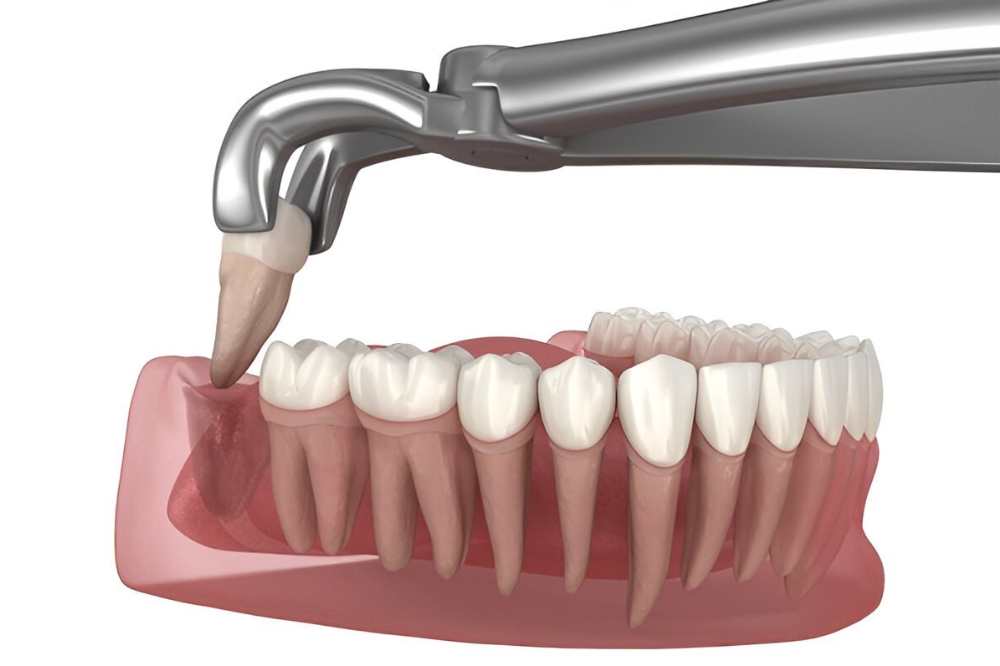Have you ever asked yourself at what point a tooth has to be removed? Knowing when you need a tooth extraction can help you avoid pain and other complications. If you have been suffering from pain or dental problems for a while, then having a tooth extraction in Calgary by a professional is the best way to get timely care.
Why Tooth Extraction May Be Necessary
Some teeth cannot be saved with a filling, a crown, or a root canal. In some cases, the safest option is to extract a tooth. Reasons for extraction include.
- Severe tooth decay that cannot be restored
- Impacted wisdom teeth are causing pain or misalignment
- Advanced gum disease leading to loose teeth
- Overcrowding before orthodontic treatments
- Damaged or fractured teeth beyond repair
When a dentist near you assesses your child’s teeth early on, tooth extractions will take place safely and with less risk of infection or any other complications occurring.
Signs You Might Need a Tooth Extraction
Knowing when to remove a tooth can prevent disasters. Common signs include.
- This implies a continuous ache of pulsating or cutting pain for which no medicine works.
- Gum swelling and infection, abscesses around the tooth.
- Severe decay or damage refers to large cavities or fractures that weaken the tooth.
- Some teeth may disrupt overall alignment and make it difficult to clean.
- Teeth that are not firmly attached to the gums.
How Tooth Extractions are Performed
Every extraction of a tooth around you is a cautious operation that depends on the tooth type and its place:
- Simple Extractions: They are done on teeth that can be seen under local anesthesia; the dentist disconnects and takes out the tooth.
- Surgical Extractions: It is the case of impacted teeth or those situated under the gum line; small incisions and stitches may be involved.
- Wisdom Teeth Removal: Generally, surgical methods are used because of impaction or misalignment.
New procedures ensure that tooth removals are less traumatic, less invasive, and at a faster healing time.
Preparing for Your Tooth Extraction
When you prepare well, you will have less anxiety and the procedure will run smoothly.
- Tell your dentist about medications, allergies, and medical conditions.
- Arrange transport if you’re going to use sedation/anesthesia.
- If your dentist told you to, don’t eat right before.
- Stick to the specific pre-surgery instructions provided by your dentist in Calgary.
Getting ready for the surgery lowers risk and helps you heal faster after the tooth extraction near you.
Recovery and Aftercare
After a tooth removal the right way, taking good care of the wound goes a long way in the healing process, and it also acts as a barrier for the infection. The procedure you can carry out includes:
- Keep the Bleeding Under Control: After the extraction, place the gauze over the socket and gently bite it for about 30 to 45 minutes.
- Relieve Pain: Use the pain medications prescribed by the dentist or over-the-counter drugs and follow the directions strictly.
- Decrease the Swelling: Wear a cold pack on your face next to the affected area, but only for short intervals.
- Cleaning Teeth: Refrain from brushing the extraction area for the first day; mouthwash with salt water is recommended.
- Nutrition: Eat only soft food and keep away from hot, spicy, or crunchy food for at least a few days.
Alternatives to Tooth Extraction
Occasionally, a dental unit can be retained using complicated procedures. The choice of treatments can be:
- Root Canal Therapy: In particular, it eradicates the infection and keeps the natural tooth.
- Dental Crowns: Bring back the function and the aesthetics of the tooth that has been damaged.
- Periodontal Treatment: Controls the infection of the gums and stops the condition from advancing to the stage of tooth loss.
- Orthodontic Solutions: The problem of crowded teeth can be solved by the movement of certain teeth instead of cutting.
Definitely, your dental specialist will look into your situation and decide whether removal is the best solution or not.
Take the Next Step in Oral Health!
You can relieve pain and infections and accelerate decay with tooth extractions. Tooth extractions don’t have to be painful. Schedule your appointment at Valley Ridge Dental Centre for a soothing, secure, and knowledgeable experience.

FAQs:
Q1.Does tooth extraction hurt?
You won’t feel a thing due to local anesthesia or sedation. Some discomfort may occur afterward.
Q2.How long does it take to recover from a tooth extraction?
It takes different times to heal from a tooth extraction procedure.
Q3.Can all teeth be replaced after extraction?
Definitely! Other options include implants, bridges and partial dentures, of course.
Q4.What is a dry socket?
A dry socket occurs when the blood clot at an extraction site fails to form, causing pain and delayed healing.

